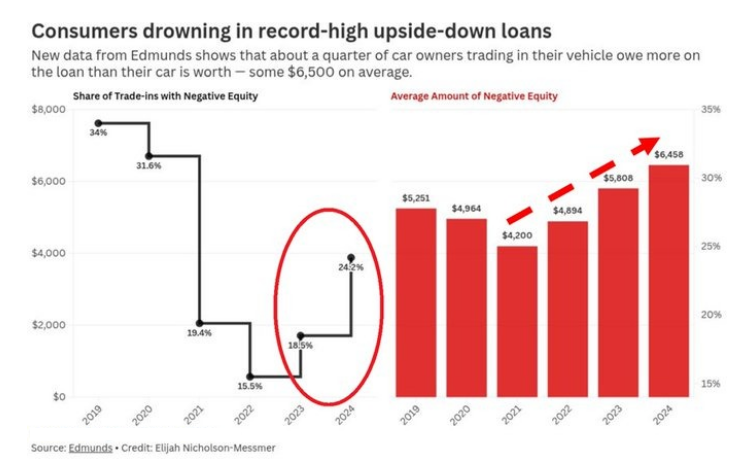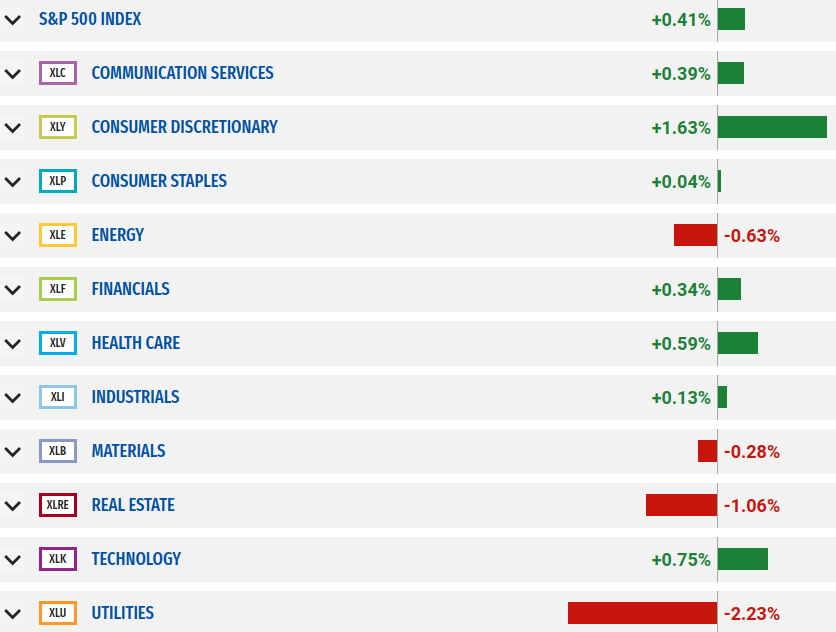Weekly Market Commentary - Nov 2nd, 2024 - Click Here for Past Commentaries
-
The U.S. presidential election is now just days away, on Tuesday, November 5, and the
race between the two candidates remains tight. We may not know the results of the election
immediately – it could take days before the counting is finalized – and this may create temporary
uncertainty for investors, which could mean some form of market volatility is likely.
-
The data points to an economy that may be moderating but is still squarely positive. Earnings
growth for the third quarter is on track for 5%, slightly above expectations of around 4%
growth at the start of the quarter. For the full year, earnings growth is expected to be
about 9%, which is well above last year's 1% growth rate. The jobs report for October came in
below expectations, but these figures were skewed by last month's hurricanes and labor strikes.
We believe the labor market is moderating but not showing signs of collapsing.
-
Overall, the softening in the macroeconomic data also likely means that the Federal Reserve
remains on track to lower interest rates in both November and December this year. This
combination of lower rates and an economy that remains resilient has historically been positive
for stock markets broadly. In our view, investors can continue to lean into any bouts of market
volatility, election-related or otherwise, to diversify or add quality investments in line with
long-term strategic allocations in stocks and bonds, as we believe the economy will benefit as
uncertainty from the election is lifted and growth potentially reaccelerates.
-
Third-quarter earnings season for S&P 500 companies is well underway, and the results have
been modestly positive thus far. The expectation heading into the quarter was that corporate
earnings would grow about 4% year-over-year, below the forecast of about 7.5% at the end of June.
With about 70% of S&P companies having reported already, third-quarter growth looks on pace for
about 5% thus far, which is slightly above the lowered expectations.
This past week many mega-cap technology stocks reported earnings, including Google, Microsoft, Meta, Apple and Amazon. Overall, the trends were mixed. While almost all the companies beat expectations for revenue and earnings growth, the guidance for next quarter and outlook on spending sparked volatility for some of the stocks. Companies like Microsoft and Apple offered guidance that was below analyst expectations, while others like Meta talked about increased spending on artificial intelligence (AI), which investors worried may weigh on profit margins. There is still investor scrutiny around when these companies will realize meaningful returns on AI spending, as well as when there will be wider adoption of the technology. In our view, we believe AI is still in the early innings of a multiyear growth and adoption phase, and over time should benefit sectors beyond technology, including health care, financial services, and manufacturing.
More broadly, we believe earnings growth should be positive and a driver of returns both this year and through 2025. Earnings growth for this year is on track for about 9% annually, well above last year's 1% growth rate. For 2025, we see the potential for double-digit earnings growth, especially as interest rates moderate and inflation remains in the 2% range, both of which should support household consumption and corporate spending.
-
The other major datapoint released last week was the U.S. nonfarm-jobs report for the month of
October. The total new jobs came in well below expectations, with 12,000 jobs added versus
forecasts of 100,000.* The last two months were also revised lower by 112,000, although they
were still relatively healthy at 78,000 and 223,000. The average monthly jobs added this year
are now at about 170,000, below last year's average of 250,000 but still above the long-term
average of 148,000.
In addition to U.S. elections next week, the November Federal Reserve meeting is also on deck for Wednesday and Thursday. Given the weaker-than-expected jobs report and downward revisions, we believe the Fed is squarely on track to cut rates next week by 0.25%. In fact, markets are now pricing in higher probabilities of rate cuts at both the November and December Fed meetings.
Beyond the 2024 meetings, we would expect the Fed to continue to bring rates toward a more neutral level, although perhaps at a more measured pace, given that it will be mindful of not stoking inflation along the way. In our view, the terminal rate, or ending policy rate, will likely be around 3.5%, which implies about six rate cuts total from the current 5.0% fed funds rate.
Historically, if the Fed is cutting rates for the right reasons -- i.e., inflation has moderated and central banks want to gradually move rates to less restrictive territory -- this is a good backdrop for financial markets. In our view, there is opportunity both for equity and bond investors, especially if the economy holds up and corporate default rates remain low.
-
The car market bubble: ~33% of Americans who financed their cars now owe more on their
loans than the vehicle is worth. This represents 31 million auto-loan accounts registered by
the Consumer Financial Protection Bureau. Making things worse, used vehicle prices in the US
have dropped by ~22% over the last 3 years. Additionally, 24.2% of vehicles traded-in had
negative equity in 2024, the most in 4 years according to Edmunds. These borrowers owed an
average of $6,458 more than their car was worth when they traded it in, the most on record.

-
Mortgage rates are skyrocketing: The average interest rate on a 30-year mortgage just jumped
another 8 basis points yesterday alone. Homebuyers can now expect an average interest rate
of 7.23%, up sharply from 6.70% seen just 1 month ago. In Q3 2024, the median US home sold
for $420,400 which means a mortgage payment with 20% down would be $2,343/month. Including
taxes and insurance, homebuyers can now expect to spend over $3,000/month. In other words,
homebuyers are now spending over 50% of their post-tax income on home payments.

-
Final Words: Markets are at the alltime high and fed is cutting
interest rate, caution warranted. Below is CNN Greed vs Fear Index, pointing at
'neutral' while global political turmoil is at peak.
Below is last week sector performance report.

If you are looking for investment opportunities, you can take a look at our
Hidden Gems
section, and if you want to see our past performance, visit our
Past Performance section. If you are looking for
safe and low cost Exchange Traded funds(ETFs), check out our
ETF recommendations.
Currrent Shiller PE (see below) is showing overbought conditions as index is far above mean/media
and our AryaFin engine is indicating caution. Have a good weekend.
